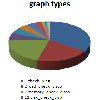Search Exchange
Search All Sites
Nagios Live Webinars
Let our experts show you how Nagios can help your organization.Login
Directory Tree
Performance Graphs for Nagios with nagiosgraph
Last Release Date
2009-10-29
Compatible With
- Nagios 3.x
- Nagios 4.x
Owner
Hits
103678
Meet The New Nagios Core Services Platform
Built on over 25 years of monitoring experience, the Nagios Core Services Platform provides insightful monitoring dashboards, time-saving monitoring wizards, and unmatched ease of use. Use it for free indefinitely.
Monitoring Made Magically Better
- Nagios Core on Overdrive
- Powerful Monitoring Dashboards
- Time-Saving Configuration Wizards
- Open Source Powered Monitoring On Steroids
- And So Much More!
For us, Nagiosgraph is the most important extension to our monitoring system. Before Nagiosgraph, we had been relying entirely on Cacti for performance monitoring. With the implementation of Nagiosgraph in 2008, Nagios itself is now covering most of the performance graphing itself. We benefit from this integration through quick lookups of historic performance data in one single system. No more additional login into a second application, no more manual search and mapping of devices between Nagios and Cacti. We still retain Cacti, but it lost most of its importance.
Why bother with Nagiosgraph when there are other packages out? Nagiosgraph integrates with Nagios while still being fully independend of it. It is written in Perl so fixing is easily possible. It doesn't need a database and handles everything in files. New graphs are generated automatically if a map entry exists. We do not need to define new systems or services in nagiosgraph, a huge time saver. Today, Nagiosgraph running unchanged since 2008, easily handles 1500+ active devices with a total of over 4000 individual graphs while it is entirely 'maintenance-free'.
Why bother with Nagiosgraph when there are other packages out? Nagiosgraph integrates with Nagios while still being fully independend of it. It is written in Perl so fixing is easily possible. It doesn't need a database and handles everything in files. New graphs are generated automatically if a map entry exists. We do not need to define new systems or services in nagiosgraph, a huge time saver. Today, Nagiosgraph running unchanged since 2008, easily handles 1500+ active devices with a total of over 4000 individual graphs while it is entirely 'maintenance-free'.
Reviews (0)
Be the first to review this listing!


 New Listings
New Listings
